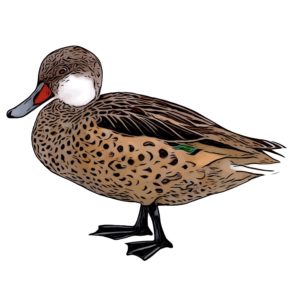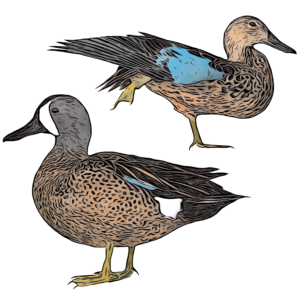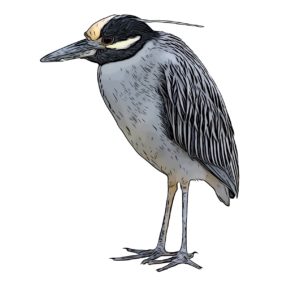
Yellow-crowned Night Heron
(Adult)
Where to Look
- Santa Cruz Highlands
- Lagoons on Larger Islands
Similar Galapagos Species
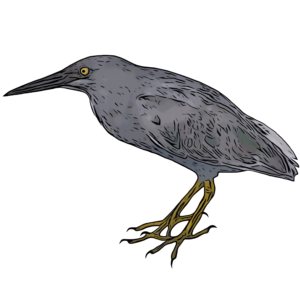
Striated (Lava) Heron
(Butorides striata)
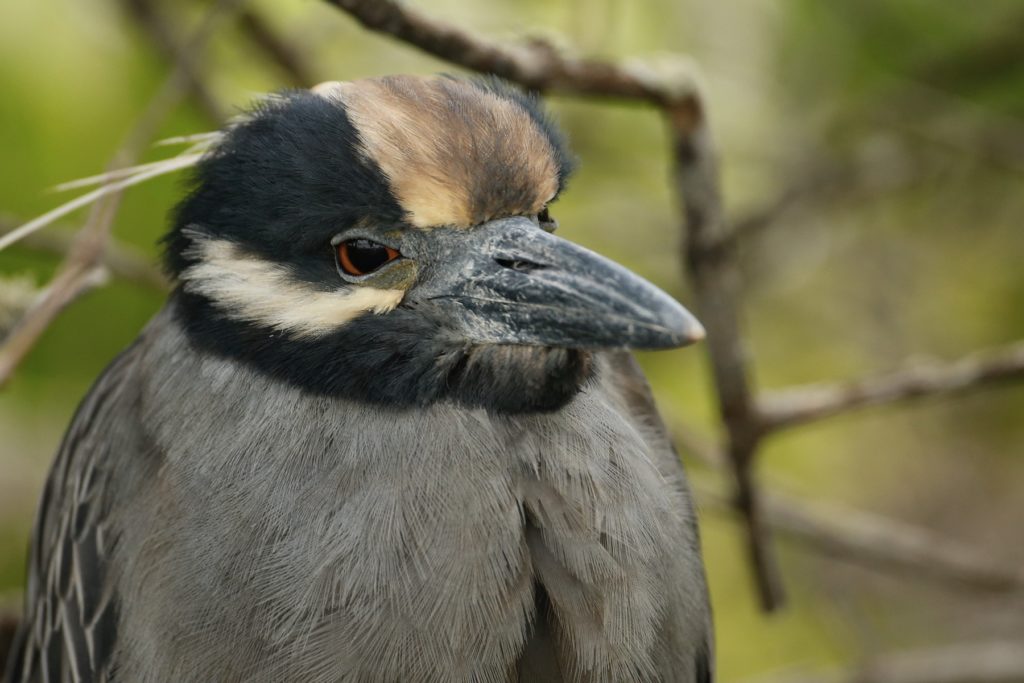
Identification
Adults easily identified by their dark heads and pale yellow crown and cheek stripe. Imature birds may resemble adult Striated Heron, but are significantly taller, longer-legged and have large red (not yellow) eyes. Juvenile night herons can be distinguished from juvenile Striated Herons in a similar fashion.
Description
Adult is overall blue-grey with bold black markings on their back, yellow legs, black head with pale yellow crown, cheek stripe and head plumes, thick black bill and large, bright red eyes. Imatures similar to adults, but pale yellow head markings are faded. Sexes are similar. Juveniles are overall dark brown with extensive white streaks on their heads and underparts and white spots on their upperparts.
Galapagos Distribution
Found throughout the main archipelago, usually along the coast or near lagoons.
Global Distribution
A breeding viitor to most of the Eastern USA. Resident in the Carribean, along both Mexican coastlines south to N Peru in the west and S Brazil in the East.
Status in the Galapagos
Common resident. The endemic subspecies which occurs is one of 6 world wide.

Identification
Unmistakeable. Distribution does not ovevrlap with Santa Fe Land Iguana and can easily be distinguished from both Marine and Pink Land Iguana by its yellow color. This being siad, the species is known to hybridise with Marine Iguana at locations such as South Plaza Island where the two co-occur.
Description
An overall yellowish orange iguana with a brownish red to dark brown back. Males are generally larger, have thicker tails, more pronounced dorsal crests and larger, more blunted heads than females.
Galapagos Distribution
Found across Isabela, Fernandina, Baltra, North Seymour and South Plaza Islands. There is also a population on NW Santa Cruz and it has been re-introduced to Santiago. The best places to look for it are South Plaza and North Seymour.
Global Distribution
The Galapagos Land Iguana is endemic to the Galapagos
Status in the Galapagos
Locally common to rare endemic resident.
Conservation
Vulnerable. With a total population of roughly 10, 000 mature individuals, this species is ranked as ‘vulnerable’. It has been extripated from Rabida and Santiago and populations across Santa Cruz and southern Isabela have been greatly reduced. It is threatened by invasive predators such as cats, dogs, pigs and rats that prey on its eggs young.

